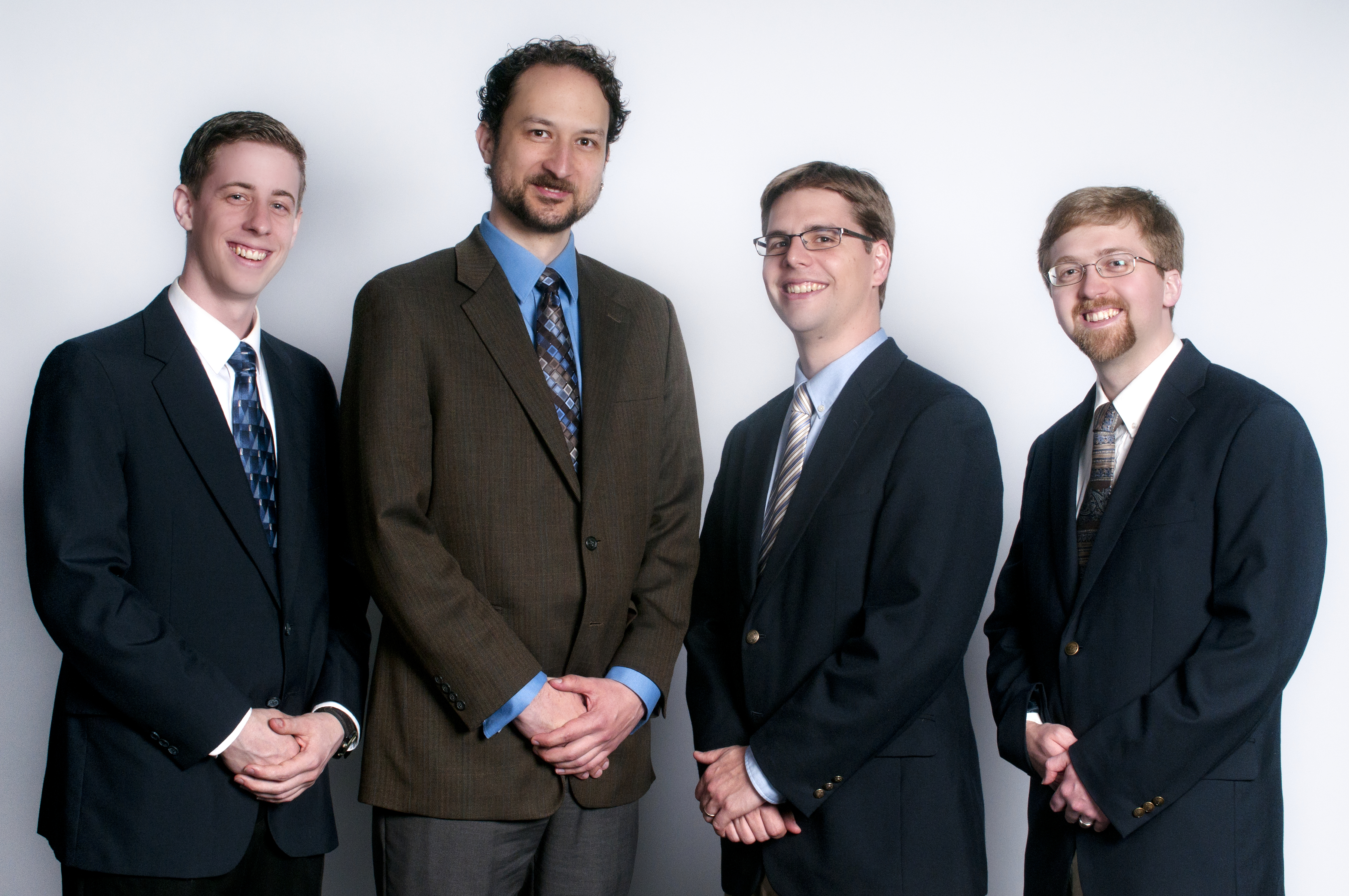Professor, three students from engineering and mathematics receive 2012 XCaliber Award

Taking inspiration from a blind Virginia Tech student enrolled in multivariate calculus, a four-member team developed technology that helped a visually impaired student understand the effects of complex mathematical formulas. As a result, the team has received the university's 2012 XCaliber Award for excellence as a group involved with technology-assisted teaching.
Members of the award-winning team include
- Christopher Williams, assistant professor of mechanical engineering and engineering education, College of Engineering;
- Austin Amaya of Urbana, Ill., doctoral student, mathematics, College of Science;
- Ethan Groves of Middletown, Va., junior, computer engineering, College of Engineering; and,
- Jacob Moore of Blacksburg, Va., doctoral student, engineering education, College of Engineering.
Established in 1996 by Office of the Provost, the XCaliber Award (shorthand for exceptional, high caliber work) is presented annually by the Virginia Tech Center for Innovation in Learning to recognize individual faculty members or teams of faculty and staff who integrate technology in teaching and learning. The award celebrates innovative, student-centered approaches to learning activities.
The team wanted to develop a method of displaying a wide range of complicated mathematical objects in a tactile way and chose 3-D printing as the means. This printing is capable of quickly fabricating complex 3-D shapes layer-by-layer from a digital representation of a physical model. The team created 3-D representations of mathematical functions using mathematical modeling and computer aided drafting software. The resulting representations are saved in a standardized file format, which can allow for a broad distribution of the created models to other students via email.
This technology is capable of quickly fabricating complex 3-D shapes, uses a digital representation of physical models that interfaces well with existing mathematical modeling software, is easy to operate, and has a standardized file format that allows for broad distribution of created models via email to other students.
With continuous feedback from Williams and Chelsea Cook of Newport News, Va., a sophomore physics major in the College of Science, the team identified distinct educational needs to be addressed and developed types of models accordingly. By understanding the common surfaces students needed to know and particular surfaces used in class and for homework, the team was able to create tactile models of those surfaces for the visually impaired student to carry and use as needed.
“Since I consider myself primarily a tactile learner, multivariate calculus was difficult at first because I had no physical experience with the shapes and surfaces the class was discussing,” said Cook, who is blind. “This is way having these models was so crucial.”
Where sighted students would receive figures or graphs to explore, understand, and describe or use, the visually impaired student used a tactile model to explore for understanding and visualizing the meaning of complex mathematics with her fingers. Such tactile 3-D models may also aid learning in sighted students who have difficulties visualizing abstract geometries from 2-D representations.
Dedicated to its motto, Ut Prosim (That I May Serve), Virginia Tech takes a hands-on, engaging approach to education, preparing scholars to be leaders in their fields and communities. As the commonwealth’s most comprehensive university and its leading research institution, Virginia Tech offers 240 undergraduate and graduate degree programs to more than 31,000 students and manages a research portfolio of $513 million. The university fulfills its land-grant mission of transforming knowledge to practice through technological leadership and by fueling economic growth and job creation locally, regionally, and across Virginia.




